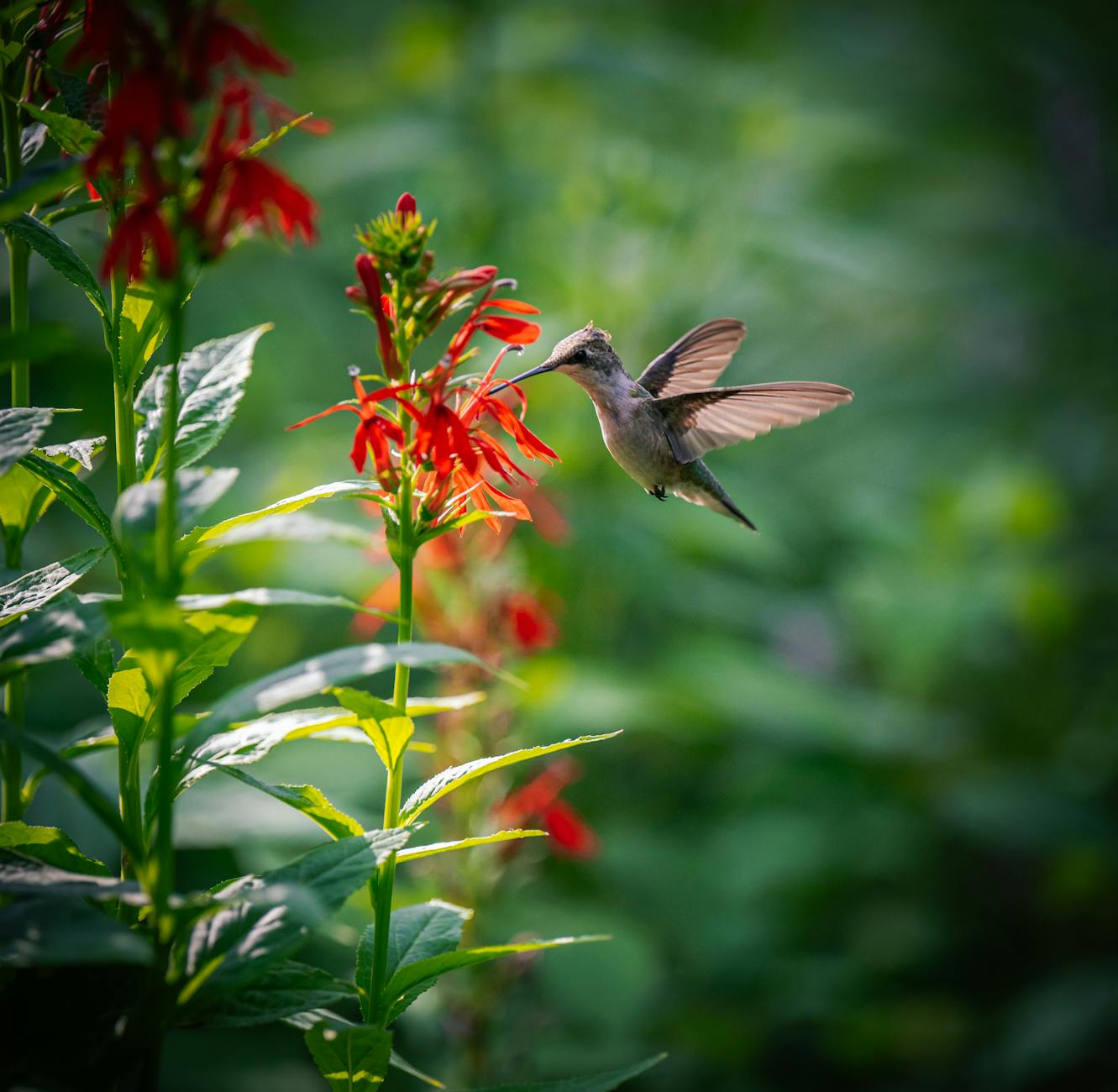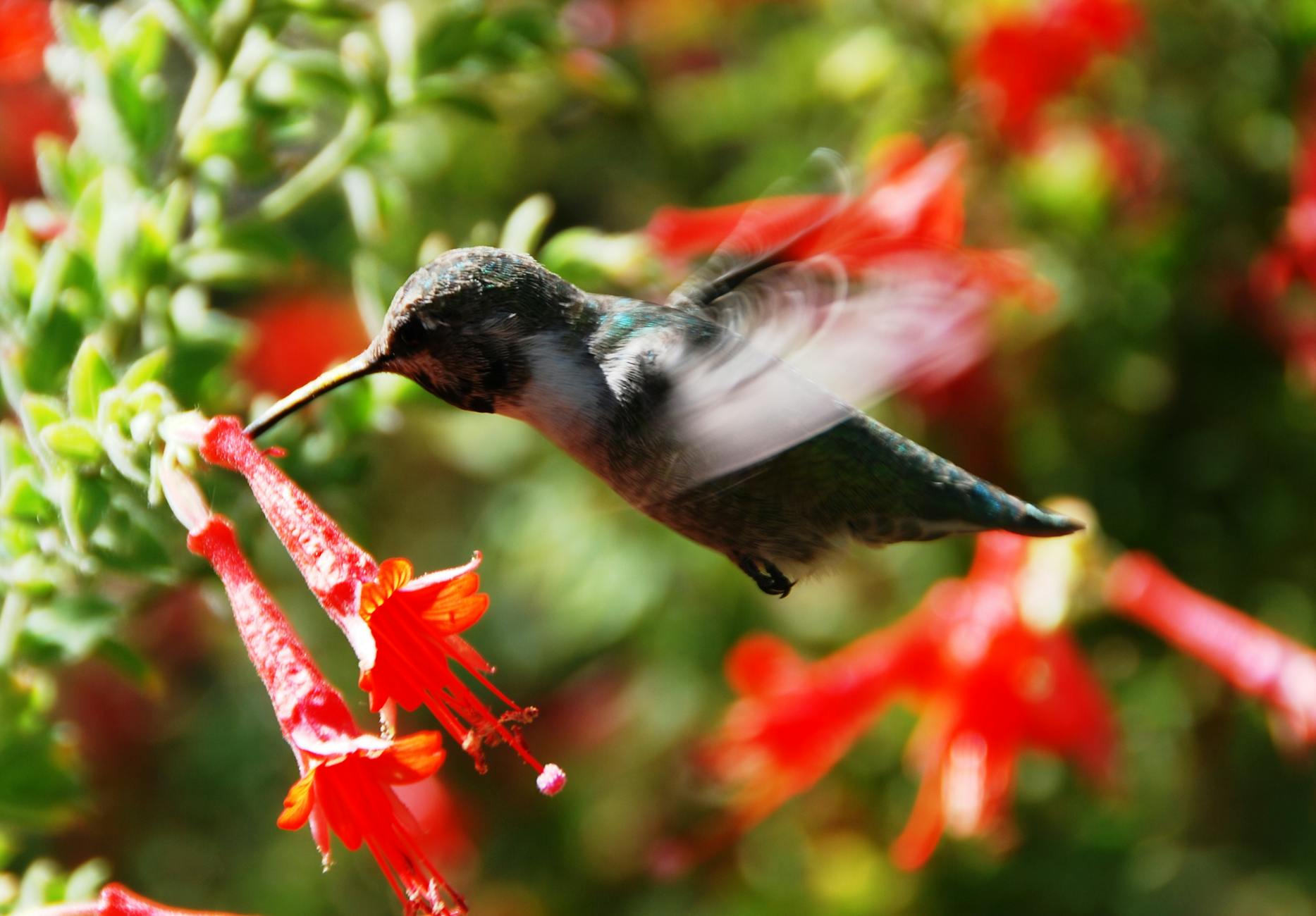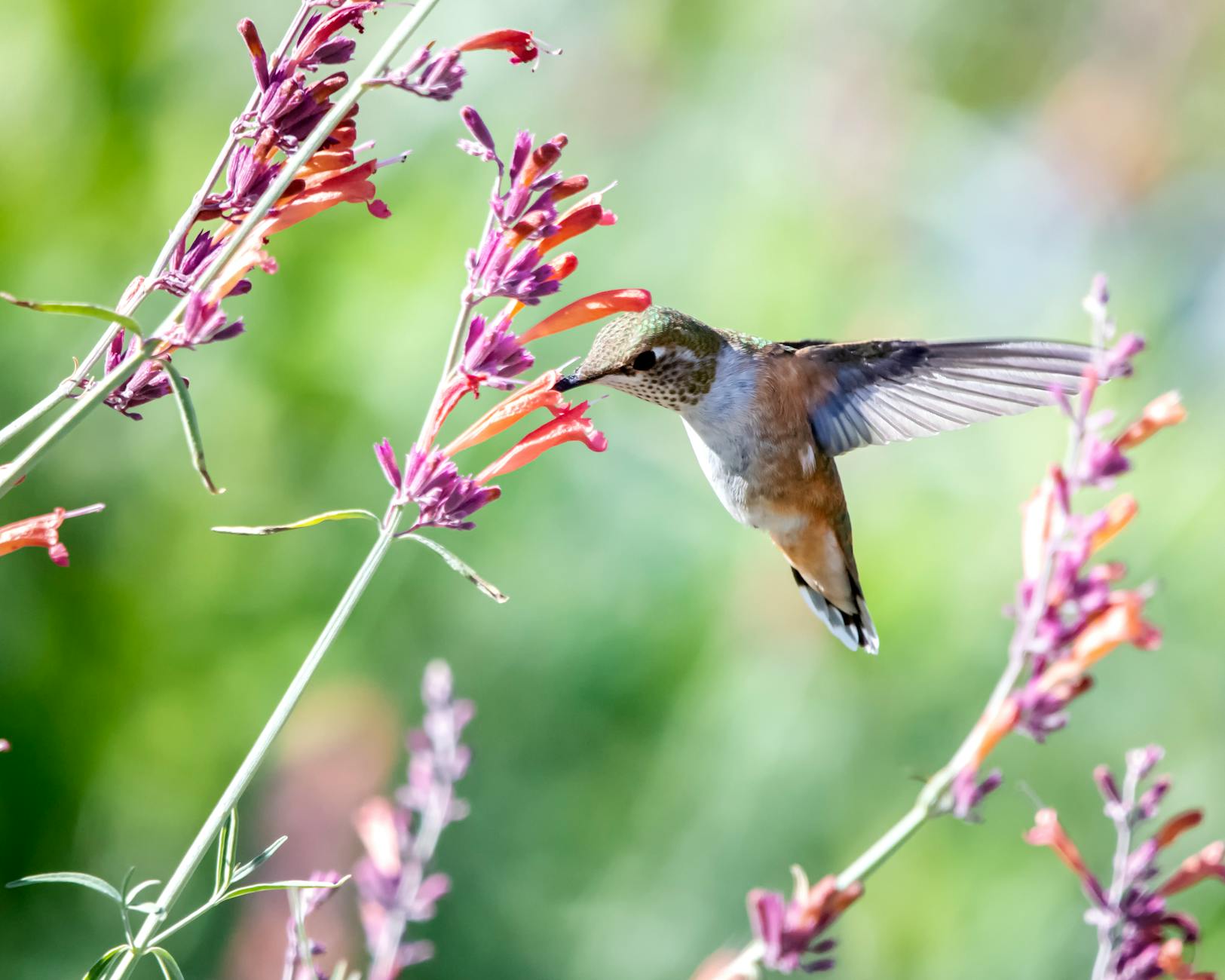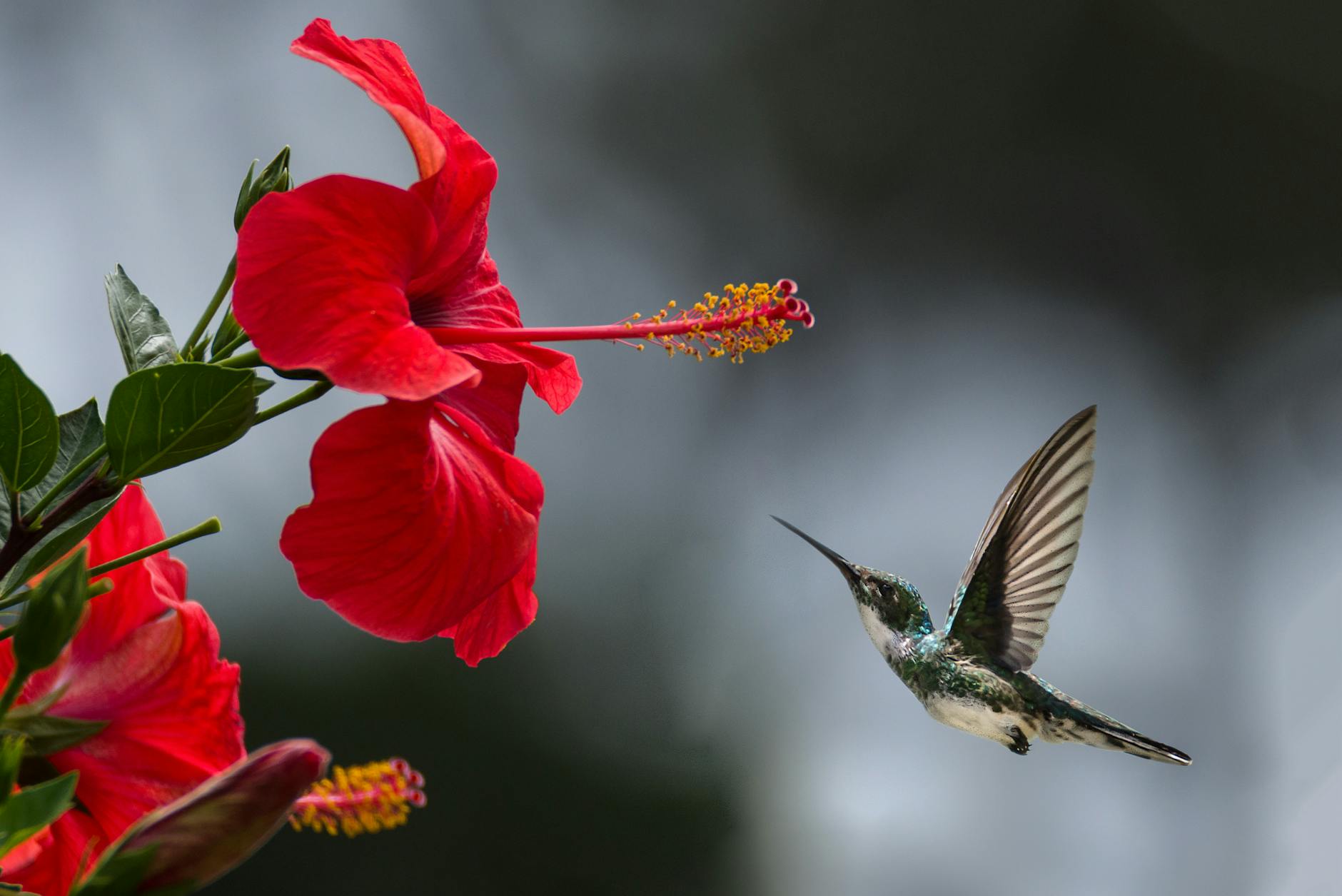Transform Your Yard for Hummingbirds: Inspiring Success Stories and Tips
Creating a vibrant, welcoming yard for hummingbirds can transform your garden into a lively oasis. These small, iridescent birds not only bring joy but also contribute to the ecosystem by pollinating plants. Imagine stepping outside to see these enchanting creatures flitting among the flowers, their rapid wings humming softly in the air.
In this post, you’ll discover inspiring success stories from people just like you who have revamped their outdoor spaces to attract hummingbirds. From the right plants to strategic feeder placements, you’ll learn how simple changes can make a big difference. Whether you’re a seasoned gardener or just starting out, these ideas will help you create a sanctuary for these beautiful visitors.
Successful Transformations: Inspiring Stories
Many individuals have successfully transformed their gardens into vibrant sanctuaries for hummingbirds. Their journeys are a testament to creativity, dedication, and a love for nature. Here are two inspiring stories that show how simple changes can have a significant impact.
Scott and Fay Neal’s Wildlife Garden
Scott and Fay Neal from Snellville took on an ambitious project. Their goal was to create a haven for wildlife, focusing particularly on attracting hummingbirds. They were meticulous about their methods, using a blend of native plants that produce nectar-rich flowers.
- Plant Choices: They selected a variety of species that bloom at different times, ensuring a continuous food source. Some standout choices included bee balm, trumpet vine, and salvia. These plants not only attract hummingbirds but also support other pollinators like bees and butterflies.
- Feeder Placement: The Neals strategically placed multiple feeders around their garden. They chose bright red feeders to catch the attention of passing birds. By keeping the feeders clean and filled with fresh nectar, they encouraged frequent visits from their feathered friends.
The results were spectacular. Their garden became a thriving ecosystem filled with wildlife. The vibrant colours and lively sounds of hummingbirds brought joy to their daily lives. Their story motivates others to think about how small changes in their own gardens can create a ripple effect for the environment. For more tips on creating a wildlife garden, check out this guide on attracting hummingbirds.
Michael and Kathi Rock’s Journey
Michael and Kathi Rock’s journey into wildlife gardening began with a simple gift: a hummingbird feeder. As newlyweds in the late 1990s, they filled the feeder and waited. What followed was a blossoming passion for hummingbirds and the plants that attract them.
- Planting Strategy: They gradually transformed their yard into a vibrant garden filled with nectar-rich flowers. Over the years, they concentrated on species that were known to attract hummingbirds, such as fuchsias and petunias.
- Research and Community: Michael and Kathi dove into extensive research, attending workshops and joining community groups. They documented their findings and shared tips with other enthusiasts. Their efforts helped foster a community of hummingbird lovers who learned from each other.
The couple now invites others to join their journey. They believe that anyone can create a hummingbird-friendly garden with a bit of effort and dedication. Their story, which spans over 20 years, showcases how a single feeder can spark a lifelong passion. For deeper insights into their experiences, explore their hummingbird journey.

Photo by Chris F
Effective Strategies for Attracting Hummingbirds
Creating a garden that attracts hummingbirds involves careful planning and consideration of the types of plants you choose, the timing of their blooms, and how you set up feeders. Here are some effective strategies that anyone can implement.
Choosing the Right Plants
Selecting the right flowering plants is fundamental to attracting these stunning birds. Hummingbirds are particularly drawn to bright, tubular flowers that produce abundant nectar. Here are some top choices based on successful transformations from avid gardeners:
- Bee Balm (Monarda): Known for its vibrant colour and rich nectar, this plant is a favourite among hummingbirds.
- Trumpet Vine (Campsis radicans): This vigorous climber boasts stunning, trumpet-shaped flowers perfect for attracting pollinators.
- Salvia: A variety of salvia species, including red salvia, provide a great source of nectar.
- Fuchsia: These delicate dangling flowers not only look beautiful but are also rich in nectar.
- Columbine (Aquilegia): Their unique shape and colourful blooms are highly attractive to hummingbirds.
By incorporating these plants into your yard, as seen in the success stories of Scott and Fay Neal, you’ll create a visually stunning and inviting environment. For a more comprehensive list of plants that attract hummingbirds, check out this Hummingbird Plant Guide.

Photo by Jeffrey Eisen
Creating a Continuous Bloom
Providing a continuous source of nectar is vital for hummingbirds throughout the seasons. By planting species that bloom at different times, you ensure that your garden remains a reliable food source. Here’s how to plan:
- Early Spring: Focus on plants like columbine and red salvia, which bloom early.
- Mid-Summer: Incorporate bee balm and trumpet vine as these flowers hit their peak.
- Late Summer to Fall: Choose plants like asters and late-blooming salvias.
By staggering these bloom times, you guarantee that hummingbirds have a consistent supply of nectar. The more varied your planting, the more enticing your garden will be.
Setting Up Feeders Correctly
Positioning your hummingbird feeders in the right locations can significantly enhance their visibility and accessibility. Consider the following tips:
- Optimal Location: Place feeders about 10-15 feet away from bushes or trees. This gives hummingbirds a safe place to perch and rest, while also ensuring they can spot the feeders easily. You can read more about ideal feeder placement in this detailed Hummingbird Feeder Placement Guide.
- Visibility: Hang feeders in a spot that’s easy to see from windows, patios, or outdoor sitting areas. This not only attracts birds but also allows you to enjoy watching them feed.
- Maintenance: Keep feeders clean and filled with fresh nectar. Change the nectar every few days, especially in warm weather, to prevent mould. For detailed instructions on feeder maintenance, see this Simple Guide to Setting up Your Hummingbird Feeder.
By employing these strategies, you’ll create a hummingbird-friendly environment that brings life and colour to your garden all year round.
Common Challenges and Solutions
Attracting hummingbirds can come with its own set of challenges. However, successful gardeners have found effective methods to tackle these issues, ensuring a thriving environment for their majestic visitors. Here, we explore common problems along with practical solutions.
Dealing with Pests
Pests can be a significant nuisance when maintaining hummingbird feeders. Bees and wasps often flock to feeders for a taste of the sweet nectar. Fortunately, there are several ways to manage this without harming the birds:
- Keep Feeders Clean: Regular cleaning of feeders is crucial. This prevents mould and keeps the sugar solution from splattering, which can attract unwanted insects. For more details on cleaning techniques, see this Essential Tips for Hummingbird Feeders.
- Use Ant Moats: Installing ant moats can effectively keep ants away from feeders. These devices create a barrier that ants can’t cross, allowing only hummingbirds to access the nectar.
- Bait and Deter: A common trick is to place fake wasp nests nearby. Wasps are territorial and will avoid areas that seem occupied. You can also smear a bit of vegetable oil around the feeding portals with a cotton swab to deter bees, as they dislike slippery surfaces. For further insights, check out this guide on keeping hummingbird feeders free from pests.

Photo by Frank Cone
Weather Considerations
Extreme weather can impact the accessibility and quality of hummingbird feeders and the plants around them. Here are some strategies to protect both:
- Utilising Covers and Domes: Weather domes or baffles can shield feeders from rain and harsh sunlight. These devices help keep nectar from becoming diluted in rain or overly warm in direct sun. Check out options like the Hummerfest Weather Dome for effective protection.
- Choosing Suitable Locations: Position feeders in sheltered areas, away from strong winds. Placing them near overhanging branches or fences can create a natural shield against rain and gusts.
- Regular Maintenance: Monitor the nectar regularly, especially after storms, to ensure it remains clean and uncontaminated. Change the solution more frequently during hot weather to keep it fresh. For tips on proper care, refer to this guide on hummingbird feeder maintenance.
By staying proactive against pests and weather challenges, you can successfully attract and support hummingbirds in your garden, turning it into a vibrant sanctuary for these beautiful birds.
The Joy of Hummingbirds in Your Garden
Creating a hummingbird-friendly yard is a rewarding experience that extends beyond mere aesthetics. It contributes positively to local ecosystems and brings joy to those who take the time to cultivate such an environment. By attracting these splendid creatures, you not only enhance biodiversity but also enrich your everyday encounters with nature.
Enhancing Biodiversity
Transforming your garden into a haven for hummingbirds is an effective way to boost local biodiversity. Hummingbirds play a pivotal role in pollination, which helps ensure the survival of many native plant species. When you include nectar-rich plants, you’ll notice an increase in not just hummingbirds, but also a variety of other pollinators, such as bees and butterflies. This interplay supports a healthier ecosystem.
Here are a few benefits of having hummingbirds visit your garden:
- Polination: Hummingbirds are known for their efficiency in pollinating flowers, which increases plant reproduction and diversity.
- Pest Control: These birds can help control pest populations, as they also feed on small insects and spiders.
- Increased Aesthetic Appeal: A garden filled with vibrant flowers and busy birds creates a lively atmosphere and a pleasing ambiance.
For further insights into the ecological advantages of establishing a hummingbird-friendly space, take a look at this guide on attracting hummingbirds.
Personal Experiences and Testimonials
Many gardeners have shared their delight and satisfaction in attracting hummingbirds to their yards. Their stories highlight the profound impact these avian visitors can have on one’s experience of nature.
One enthusiastic gardener states, “Since planting bee balm and hanging my bright red feeders, my garden has come alive with hummingbirds. Watching them dart among the flowers fills me with joy, and I often lose track of time just observing their graceful movements.”
Another wonderful example comes from a community garden in New Jersey. A visitor remarked, “This hummingbird garden is a slice of heaven! Every time I come here, I feel a sense of peace as I watch the hummingbirds flit around, and the gardeners are so dedicated to maintaining it.”
These experiences reveal the simple truth: fostering a garden for hummingbirds not only contributes to ecological balance but also creates moments of happiness and connection to nature. To explore more heartfelt testimonials, consider this review of a local hummingbird garden.

Photo by Philippe Donn
Conclusion
Transforming your yard for hummingbirds is both rewarding and achievable. The stories of Scott and Fay Neal, as well as Michael and Kathi Rock, illustrate how simple actions can create vibrant habitats.
Consider planting a variety of colourful, nectar-rich flowers and keeping feeders clean and accessible.
Take the plunge and make your garden a haven for these captivating birds.
What changes will you make to attract hummingbirds to your space? Share your experiences or plans—they might inspire others!










